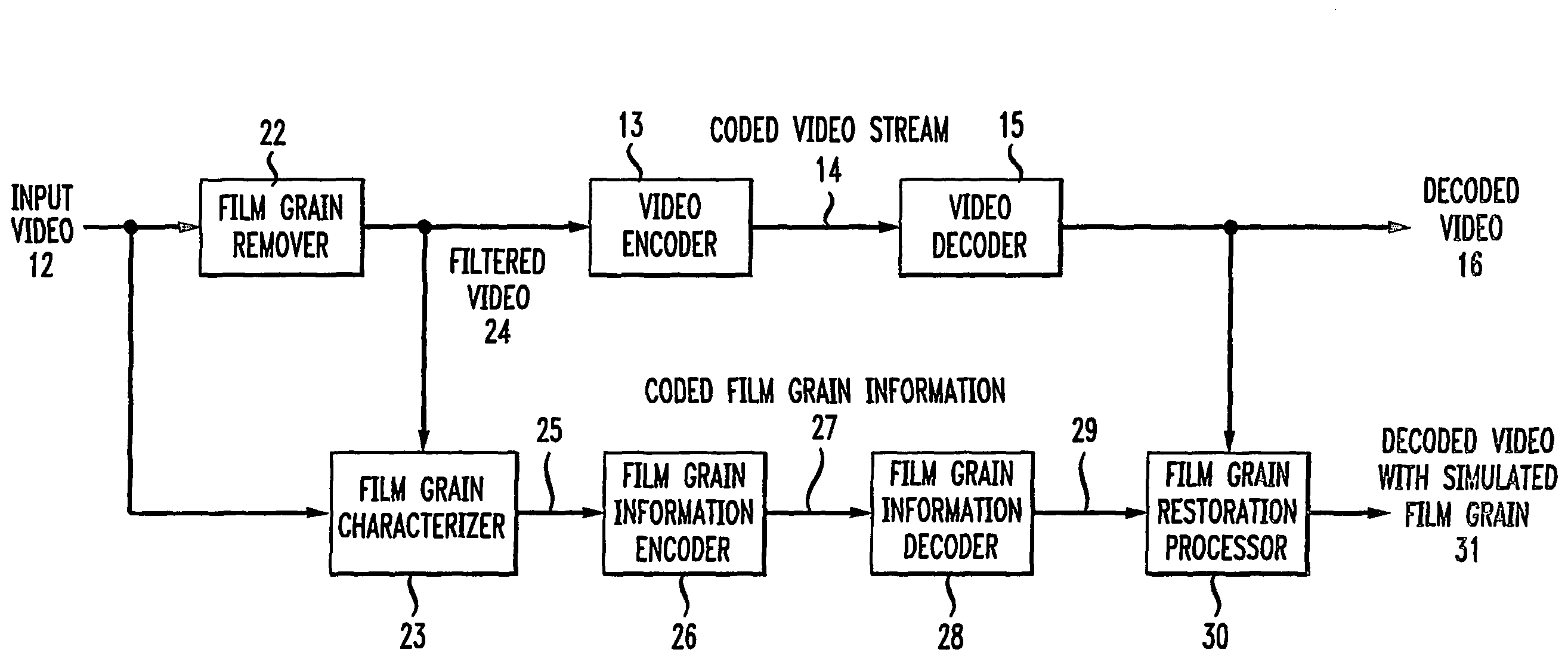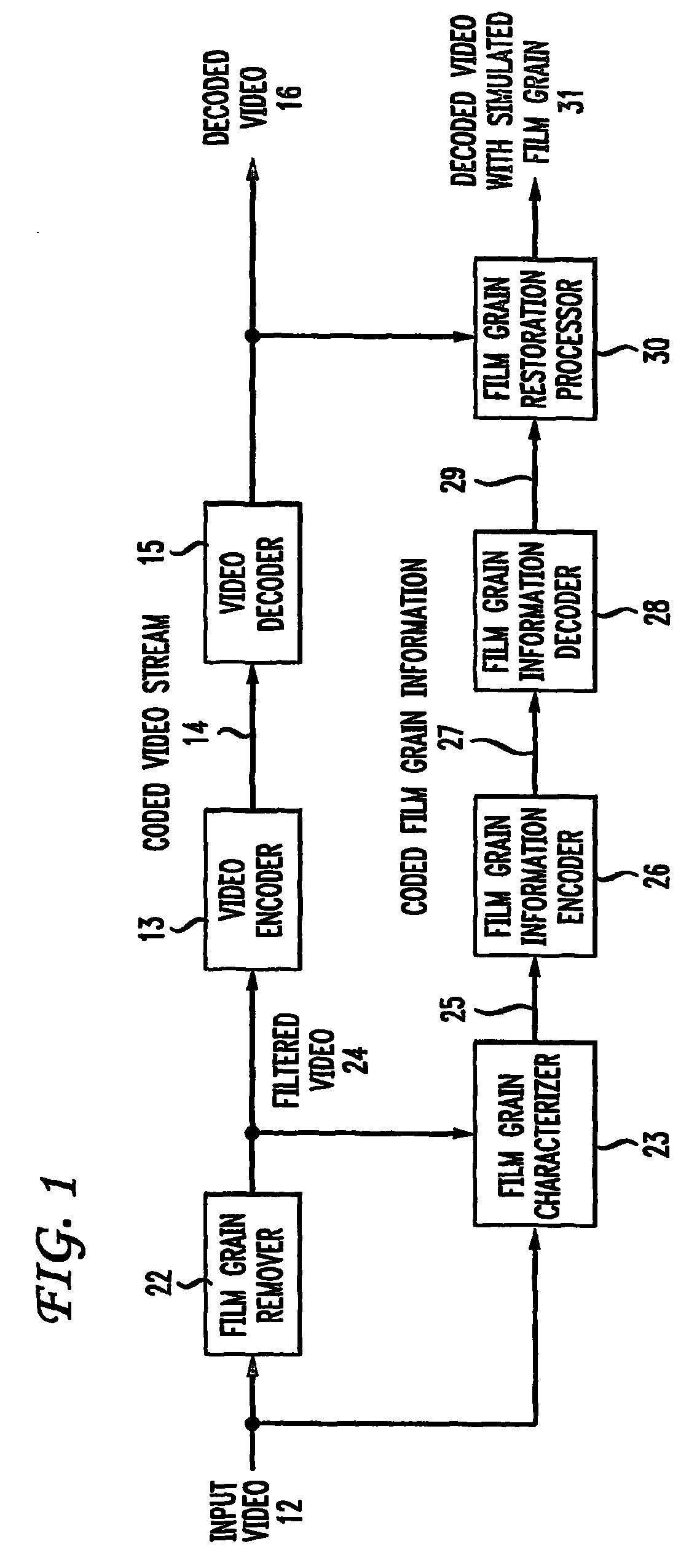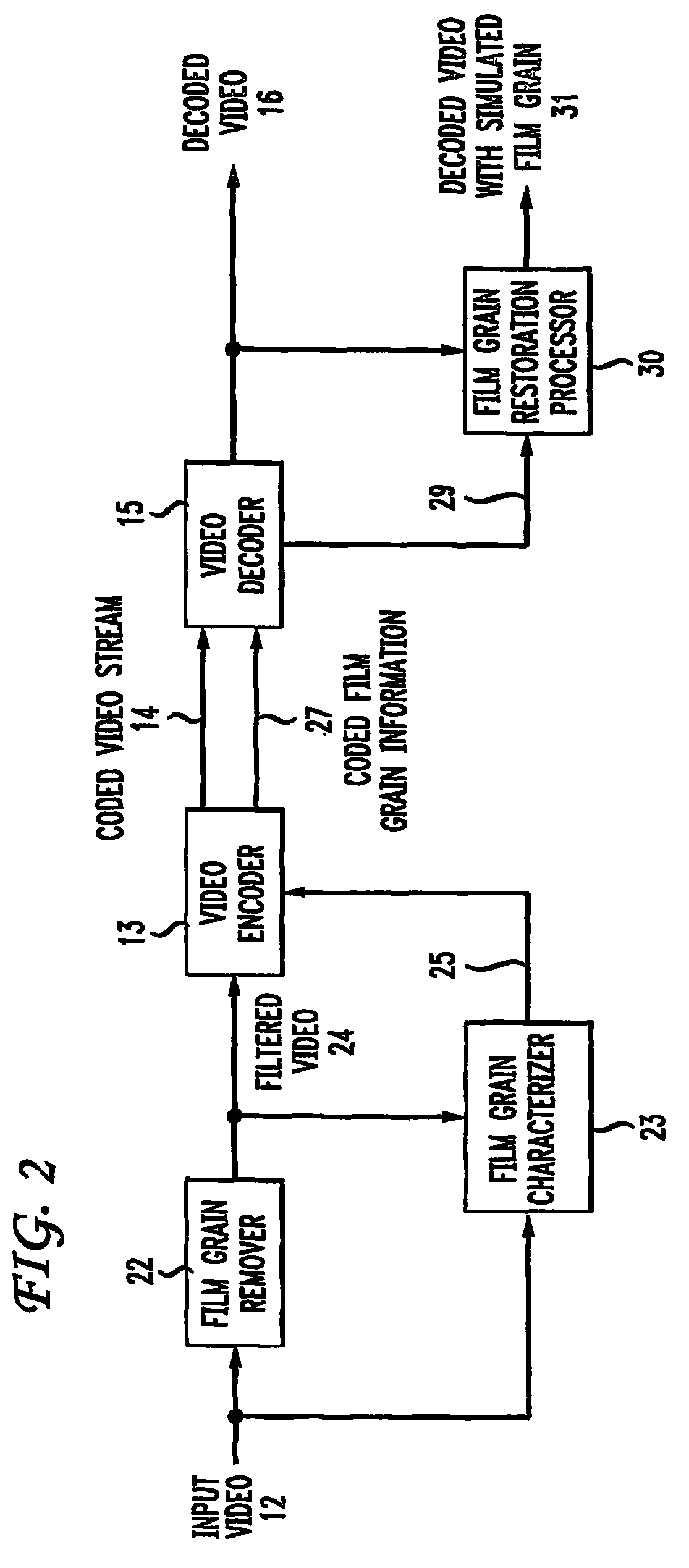Technique for simulating film grain on encoded video
a technology of film grain and encoded video, which is applied in the field of simulating the grain of photographic film, can solve the problems of difficult preservation of film grain, no specific strategy for encoding film grain differently from other high frequency information, and affecting mainly professional encoders
- Summary
- Abstract
- Description
- Claims
- Application Information
AI Technical Summary
Benefits of technology
Problems solved by technology
Method used
Image
Examples
Embodiment Construction
[0013]Different types of motion picture film have different film grain patterns well known in the art. Thus, identifying the type of film stock used to record the original source material allows identification of the film grain of the encoded material. Table 1 lists an individual numerical identifier for each of a plurality of exemplary film stocks, each having a known film grain pattern.
[0014]
TABLE 1IdentifierFilm grain model0Kodak Vision 200T 52741Kodak Vision 259D 52462Kodak Vision 320T 52773Kodak Vision 500T 5279. . .NKodak PROFESSIONAL SUPRA 100
[0015]Knowing the type of film originally used to record the pictures embodied in an encoded video assures optimal quality when restoring the film grain following image decoding. Additional information concerning down-sampling factors that apply to the original image also will prove helpful the film grain restoration at the correct scale. Note that Table I is not intended to be all inclusive but merely exemplary. Other film stocks from o...
PUM
 Login to View More
Login to View More Abstract
Description
Claims
Application Information
 Login to View More
Login to View More - R&D
- Intellectual Property
- Life Sciences
- Materials
- Tech Scout
- Unparalleled Data Quality
- Higher Quality Content
- 60% Fewer Hallucinations
Browse by: Latest US Patents, China's latest patents, Technical Efficacy Thesaurus, Application Domain, Technology Topic, Popular Technical Reports.
© 2025 PatSnap. All rights reserved.Legal|Privacy policy|Modern Slavery Act Transparency Statement|Sitemap|About US| Contact US: help@patsnap.com



